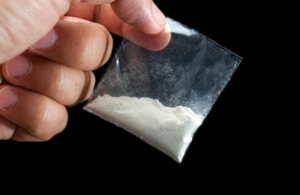ACMD publishes major cocaine report
The Advisory Council on the Misuse of Drugs (ACMD) has today (12 March) published a major report on powdered cocaine and its impact on British society.

cocaine
The Advisory Council on the Misuse of Drugs (ACMD) has today (12 March) published a major report on powdered cocaine and its impact on British society.
The report, that draws from a variety of sources of information and research, found cocaine use has spread throughout society since the mid-1990s (1) but that consumption has been on a general downwards trend since 2009 (2).
This use has coincided with the emergence of a market in cheap, low-purity (3) powdered cocaine (4) which operates in parallel with a smaller trade in a more expensive, far higher purity version of the drug (5).
While representing only a small proportion of society, users come from across the social and economic spectrum, but the report found few consumers show signs of dependency (6).
‘Cocaine Powder: Review of the evidence of prevalence and patterns of use, harms and implications’ is the result of a review initiated by the ACMD due to concerns over increased consumption and a perception that the drug is ‘safe’.
The review did not consider the classification of cocaine. The ACMD considers that the potential harms of cocaine are significant and clearly delineate it as a Class A drug.
Other issues highlighted in the report include:
- During 2013/14, an estimated 2.4% of individuals in England and Wales, aged 16-59 years, had used cocaine powder in the past year, according to Home Office statistics. This makes cocaine powder the second most commonly used illegal drug.
- 9.4% of 16 to 59-year-olds have used cocaine in their lifetime according to the 2013/14 Crime Survey for England and Wales (CSEW).
- The use of cocaine powder is strongly associated with simultaneous consumption of alcohol and the night-time economy.
- Even infrequent cocaine use can carry the risk of acute health problems such as cardiovascular issues, temporary psychotic symptoms and convulsions – and these can be experienced by first-time users.
- Cocaine (including crack) was involved in, but not necessarily the cause of, 234 of 3,521deaths in England, Scotland and Wales in 2013 (7).
- More than 50 cutting agents have been identified, including some that can cause serious medical harm.
- Patterns of use in the UK are high in comparison to most other European countries.
- Metropolitan Police statistics show around 300 of 1,200 criminal gangs in London are linked to the cocaine trade.
- Cocaine is linked to high-risk sexual behaviour.
The report also makes a series of recommendations relating to the police, government and health professionals.
Professor Les Iversen, chair of the ACMD, said: “Consumption of powdered cocaine in the United Kingdom has changed radically over the last two decades. Once characterised as the preserve of wealthy bankers and celebrities, the research highlighted in this report shows a cheaper, low-purity version of the drug has permeated society far more widely.
“Given the clear health risks associated with even infrequent cocaine use, and associated issues such as dependency and crime, this development has posed a huge challenge to health professionals, law enforcement, educators and academics.
“I hope this unique and comprehensive report will assist professionals and policy-makers with an interest in the field and inform future debate on this important issue.”